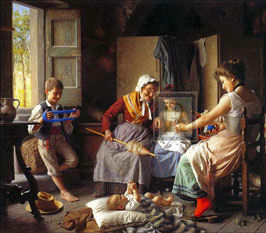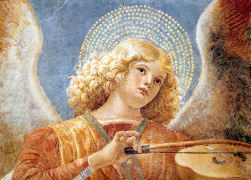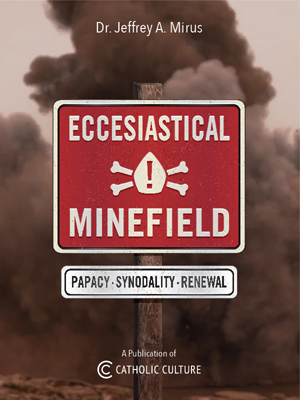Advent Workshop
 The easiest way to keep our families from celebrating Christmas ahead of time is by keeping Advent. Children love to anticipate. When there are empty mangers to fill with straws of small sacrifices, when the Mary-Candle is a daily reminder on the dinner table, when Advent hymns are sung in the candlelight of a graceful Advent wreath, children are not anxious to celebrate Christmas before time. That would offend their sense of honor.
The easiest way to keep our families from celebrating Christmas ahead of time is by keeping Advent. Children love to anticipate. When there are empty mangers to fill with straws of small sacrifices, when the Mary-Candle is a daily reminder on the dinner table, when Advent hymns are sung in the candlelight of a graceful Advent wreath, children are not anxious to celebrate Christmas before time. That would offend their sense of honor.
Older children who make Nativity sets, cut Old Testament symbols to decorate a Jesse tree, or prepare costumes for a Christmas play will find Advent all too short a time to prepare for the coming of Christ the King. (Christmas to Candlemas in a Catholic Home by Helen McLoughlin)
- The Advent Wreath: History and Assembly
- Blessing and Prayers for the Advent Wreath
- Preparing the Manger
- The Jesse Tree
- The O Antiphons
- O Antiphon House
- Mary Candle
Advent Prayers and Hymns
 The musical tradition of the universal Church is a treasure of inestimable value, greater even than that of any other art. The main reason for this pre-eminence is that, as a combination of sacred music and words, it forms a necessary or integral part of solemn liturgy." . . . The Church continues and develops this tradition: "Address . . . one another in psalms and hymns and spiritual songs, singing and making melody to the Lord with all your heart." "He who sings prays twice." (Catechism of the Catholic Church)
The musical tradition of the universal Church is a treasure of inestimable value, greater even than that of any other art. The main reason for this pre-eminence is that, as a combination of sacred music and words, it forms a necessary or integral part of solemn liturgy." . . . The Church continues and develops this tradition: "Address . . . one another in psalms and hymns and spiritual songs, singing and making melody to the Lord with all your heart." "He who sings prays twice." (Catechism of the Catholic Church)
- Christmas Anticipation Prayer
- Blessing and Prayers for Advent Wreath
- Christmas Novena — December 16-24
- Hymn: Veni, Veni Emmanuel (O Come, O Come Emmanuel)
- Hymn: Rorate Caeli
- Blessing of a Christmas Crib for the Home
- Blessing of a Christmas Tree for the Home
This item 12062 digitally provided courtesy of CatholicCulture.org






